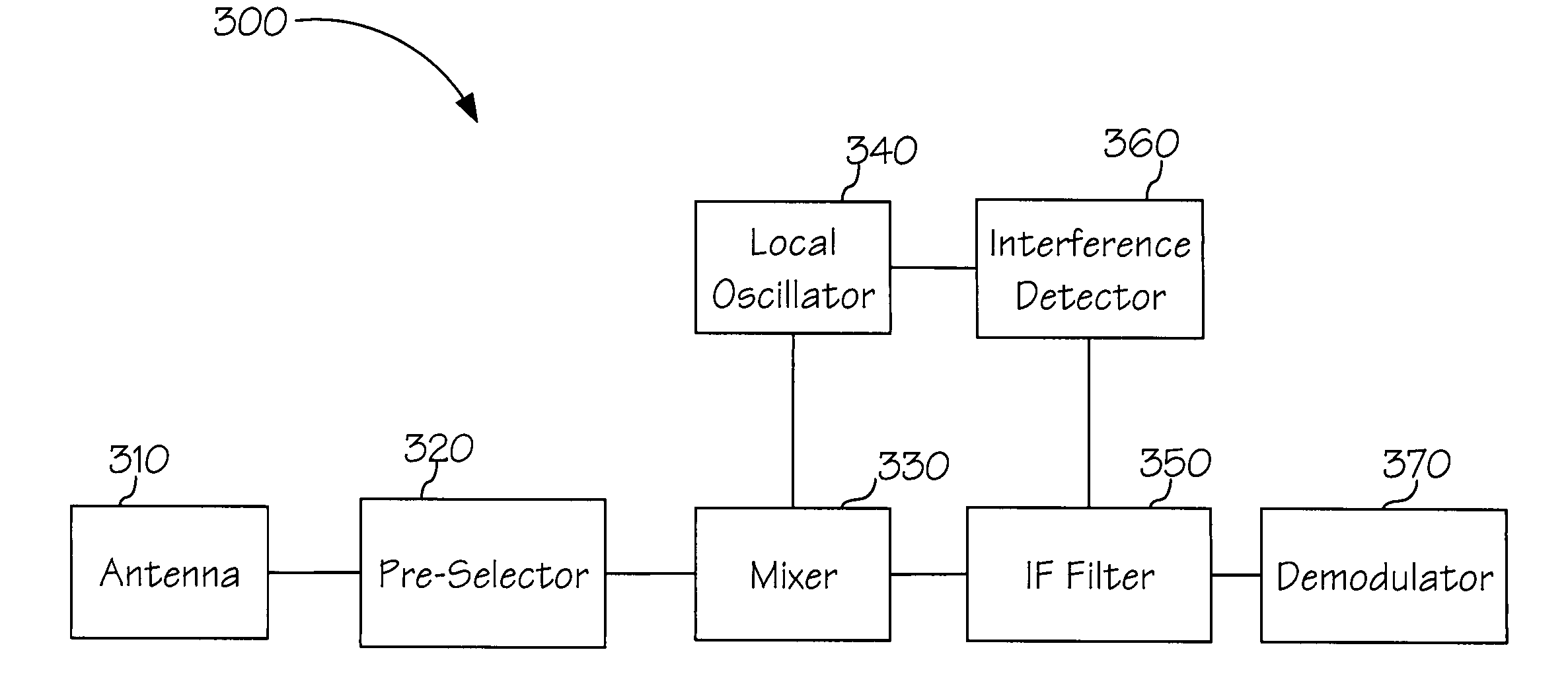Intermediate frequency tuner
a technology of intermediate frequency tuner and receiver, which is applied in the field of transceivers, can solve the problems of low performance, limited reception performance, stability problems, etc., and achieve the effect of optimizing the performance of the transceiver and optimizing the performan
- Summary
- Abstract
- Description
- Claims
- Application Information
AI Technical Summary
Benefits of technology
Problems solved by technology
Method used
Image
Examples
Embodiment Construction
[0014]Reference will now be made in detail to the presently preferred embodiments of the invention, examples of which are illustrated in the accompanying drawings.
[0015]Referring to FIG. 1, an embodiment of a process 100 for optimizing transceiver performance in accordance with the present invention is shown. Process 100 may be performed by a transceiver to process an intermediate frequency portion of a received signal. Process 100 may begin as a transceiver may scan at least a portion of a frequency band to detect interference 110. A portion of the frequency band may be equivalent to an intermediate frequency strip. In one embodiment of the invention, process 100 may be scanning for the presence of a characteristic, such as a change in amplitude, frequency or period of a signal. A characteristic may include noise or other type of interference which may prevent optimal demodulation of a modulated signal. Upon a scan of at least a portion of the frequency band, an intermediate freque...
PUM
 Login to View More
Login to View More Abstract
Description
Claims
Application Information
 Login to View More
Login to View More - R&D
- Intellectual Property
- Life Sciences
- Materials
- Tech Scout
- Unparalleled Data Quality
- Higher Quality Content
- 60% Fewer Hallucinations
Browse by: Latest US Patents, China's latest patents, Technical Efficacy Thesaurus, Application Domain, Technology Topic, Popular Technical Reports.
© 2025 PatSnap. All rights reserved.Legal|Privacy policy|Modern Slavery Act Transparency Statement|Sitemap|About US| Contact US: help@patsnap.com



